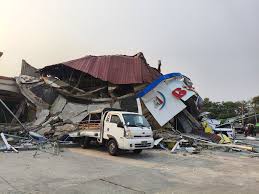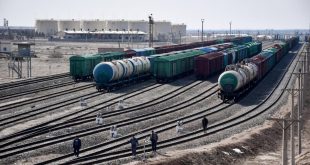AT Kabul: A powerful 7.7 magnitude earthquake struck Myanmar on March 28, 2025, causing widespread devastation and significant loss of life. The epicenter was near Mandalay, Myanmar’s second-largest city, where the majority of the destruction occurred. Nearly 700 people have been confirmed dead, with over 1,600 injured. The earthquake caused extensive damage to infrastructure, including collapsed bridges, damaged roads, and a compromised dam, raising concerns about the ability of rescue teams to reach affected areas, especially in a country already struggling with ongoing civil conflict and humanitarian crises.
The tremor also impacted neighboring Thailand, where a 33-story building under construction near Bangkok’s famous Chatuchak market collapsed, creating a massive dust cloud. In response, Thailand’s Prime Minister declared a state of emergency. The earthquake’s effects were felt strongly in both Myanmar and Thailand, with significant aftershocks continuing to affect the region.
Myanmar’s military leader, General Min Aung Hlaing, has called for international aid, acknowledging that the death toll could rise further as rescue operations continue. Global leaders have extended their condolences and pledged support. U.S. President Donald Trump stated that his administration had already reached out to Myanmar’s officials to offer assistance, while Chinese President Xi Jinping expressed full cooperation in providing relief. The United Nations has begun coordinating efforts to assess the damage and deliver urgent humanitarian aid to the affected regions.
The earthquake has exacerbated the already dire situation in Myanmar, a country that has faced ongoing conflict and a humanitarian crisis. International support is crucial to providing immediate relief and helping the country recover from this devastating disaster.
 Afghanistan Times
Afghanistan Times




